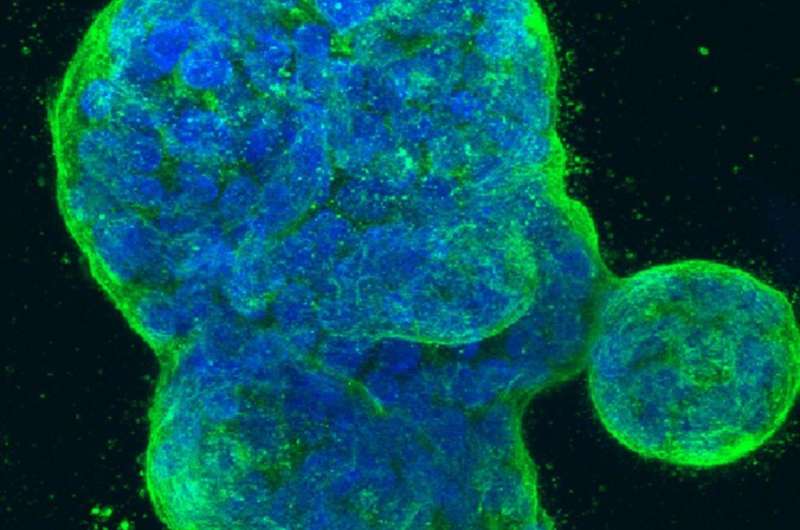Three-dimensional culture of human breast cancer cells, with DNA stained blue and a protein in the cell surface membrane stained green. Image created in 2014 by Tom Misteli, Ph.D., and Karen Meaburn, Ph.D. at the NIH IRP.
Researchers have identified a metabolic enzyme and pathway in some triple-negative breast cancer (TNBC) patients, which they hope could serve as a biomarker to select patients to receive targeted therapy.
Triple-negative breast cancer (TNBC) is the most aggressive form of breast cancer, disproportionally affecting young Black women. The disease metastasizes quickly with high relapse and mortality rates.
"Our work shows that a fraction of TNBC with high expression of dihydrolipoamide S-Succinyltransferase (DLST), a metabolic enzyme, in their tumor cells depends on the TCA-cycle for survival. Hence, DLST expression could serve as the biomarker to select TNBC patients to receive CPI-613, a drug currently in clinical trial for treating other cancers," explains corresponding author Hui Feng, MD, Ph.D., associate professor of pharmacology and medicine at Boston University School of Medicine.
Researchers in the Feng lab analyzed human patient TNBC samples, human cell lines, including those injected into animals to define the contribution of DLST to TNBC pathogenesis. Comprehensive biochemical and molecular assays were also utilized to understand the metabolic and molecular properties of TNBC cells.
"Due to current challenges in treating triple-negative breast cancer, our studies suggest that a fraction of patients with aggressive tumors can benefit from CPI-613, a drug disrupting the TCA cycle if their tumor cells have high DLST expression," said Feng.
These finding appear online in the journal Communications Biology.
Journal information: Communications Biology
Provided by Boston University School of Medicine























